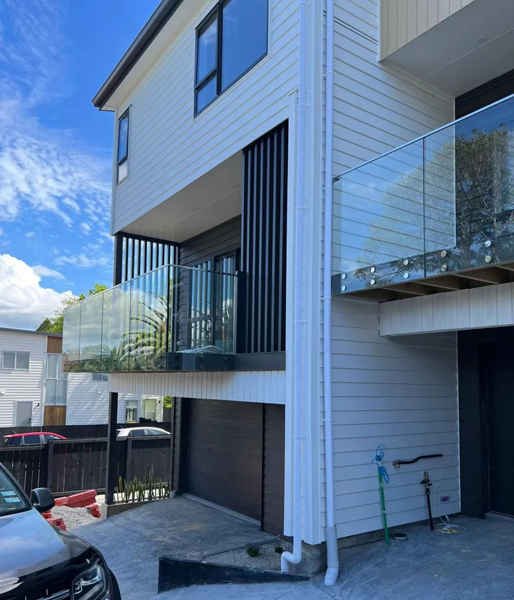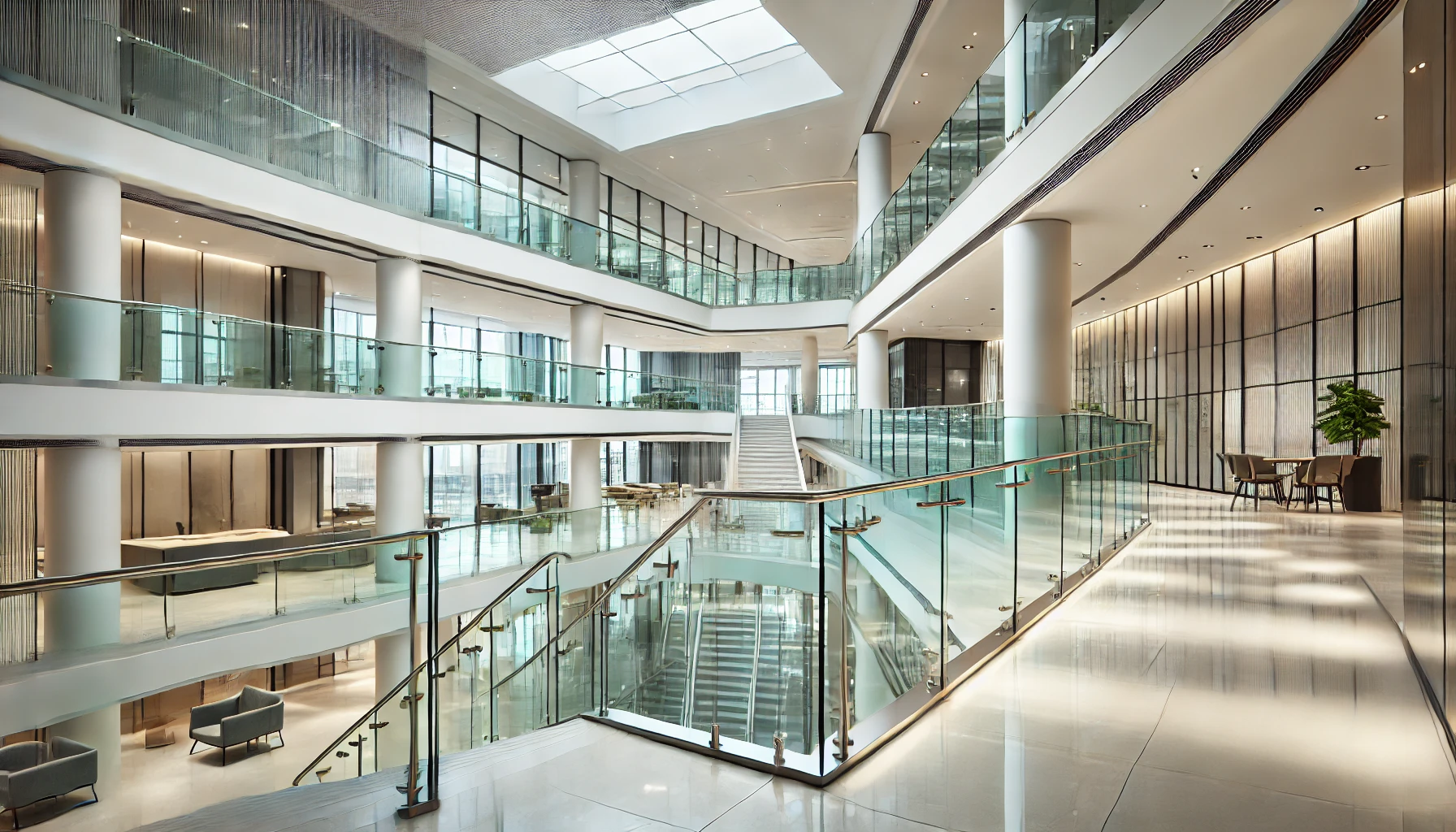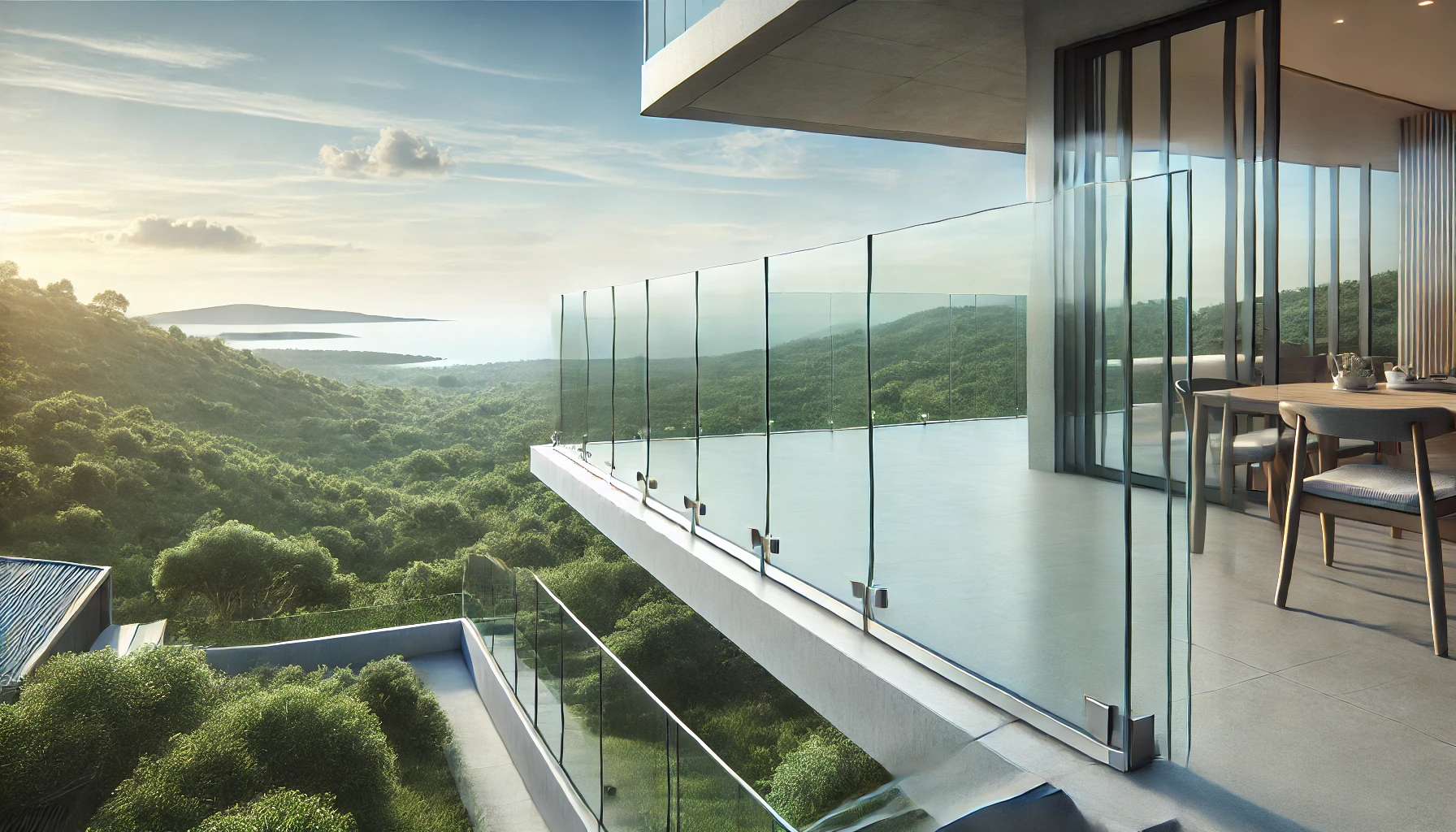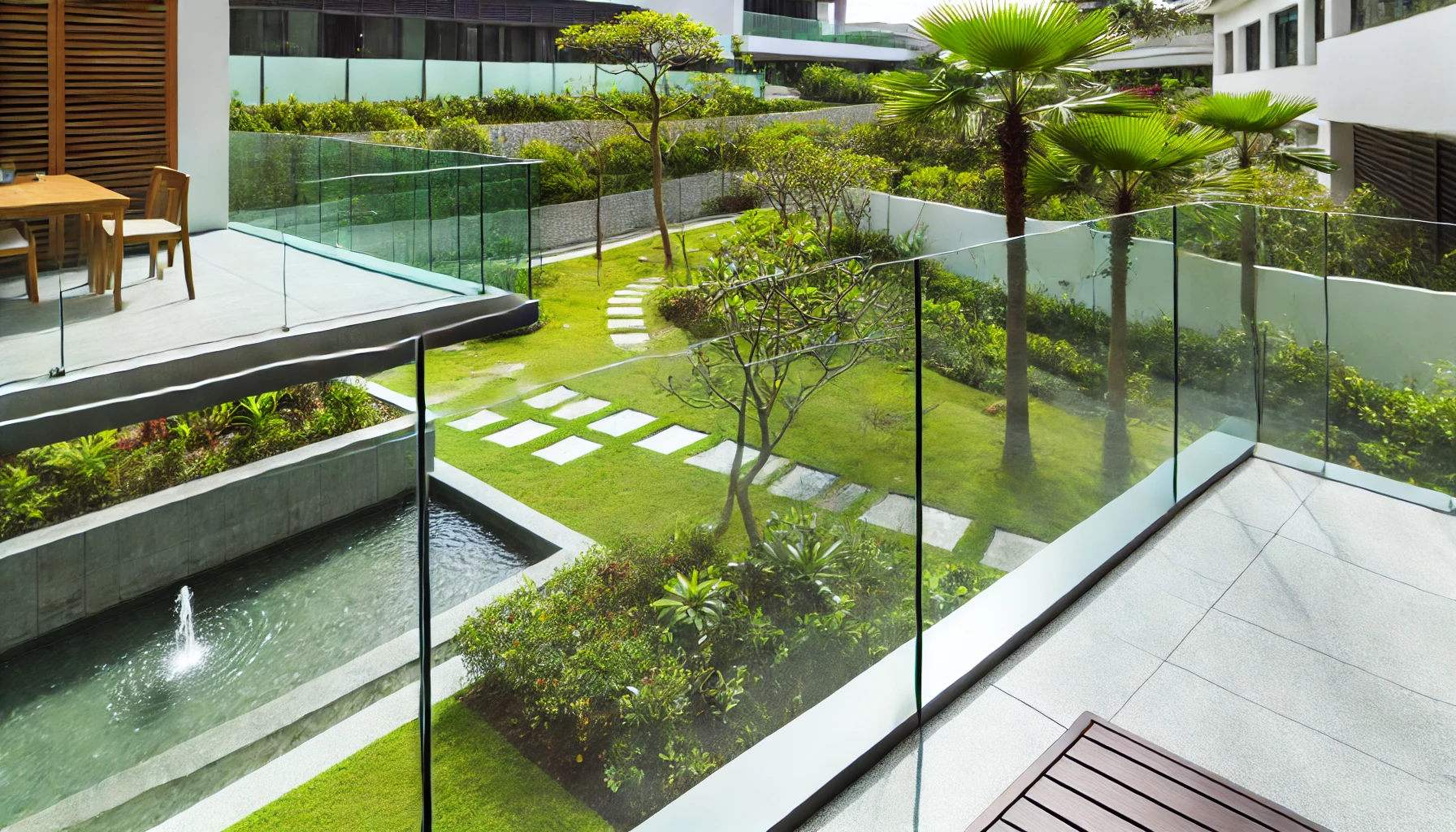Introduction
Glass railings have become a favored choice in modern architecture due to their versatility, sleek design, and ability to blend seamlessly with various architectural styles. Whether used in residential homes, commercial buildings, or outdoor spaces, glass railings can complement different design aesthetics—from minimalist modern to classic traditional. In this article, we will explore design inspirations for glass railings across various architectural styles, offering ideas on how to integrate them into your projects.
1. Modern Minimalist Style
The modern minimalist style emphasizes simplicity, clean lines, and a clutter-free environment. Glass railings are a perfect match for this aesthetic, offering transparency and a sense of openness.
a) Frameless Glass Railings
- Design: Frameless glass railings are a hallmark of modern minimalist design. They feature large, uninterrupted glass panels without visible frames, creating a seamless look.
- Applications: Ideal for balconies, staircases, and terraces, frameless railings provide unobstructed views and enhance the sense of space.
- Materials: Pairing clear tempered glass with stainless steel or hidden mounting hardware enhances the minimalist appeal.
b) Monochromatic Color Scheme
- Design: Using glass railings within a monochromatic color scheme, such as all-white or grayscale, reinforces the minimalist aesthetic.
- Applications: This approach is particularly effective in urban apartments or contemporary office spaces, where the glass railing becomes a subtle yet elegant feature.
2. Traditional Classic Style
For those who favor a more traditional or classic look, glass railings can be integrated with ornate designs and rich materials to create a sophisticated ambiance.
a) Glass with Wrought Iron or Wood Frames
- Design: Combine glass panels with decorative wrought iron or intricately carved wood frames. These materials add warmth and character to the glass, making it a fitting choice for traditional settings.
- Applications: This style is well-suited for grand staircases, balconies overlooking landscaped gardens, or classic interiors with a timeless feel.
- Materials: Opt for tinted or frosted glass to add a touch of elegance, while the frames can be finished in deep, rich colors like mahogany or bronze.
b) Curved Glass Railings
- Design: Curved glass railings offer a softer, more fluid aesthetic that complements traditional architecture. The gentle curves add a sense of movement and grace.
- Applications: Perfect for spiral staircases or curved balconies, curved glass railings can enhance the classic charm of a traditional home.
- Materials: Pairing curved glass with brass or antique-finished metal frames can create a striking contrast that elevates the overall design.
3. Industrial Style
The industrial style is characterized by raw, unfinished materials, exposed structures, and a utilitarian aesthetic. Glass railings can add a touch of modernity while preserving the industrial vibe.
a) Glass with Metal Frames
- Design: In an industrial setting, glass railings can be paired with blackened steel or raw metal frames. The combination of glass and metal creates a robust, edgy look.
- Applications: Suitable for loft apartments, converted warehouses, or modern office spaces, this design emphasizes the functional and no-nonsense approach of industrial architecture.
- Materials: Clear or lightly tinted glass works well, and the metal frames can be left unfinished or treated with a matte coating to maintain the industrial feel.
b) Exposed Hardware
- Design: Highlighting the hardware, such as bolts, brackets, and fasteners, can enhance the industrial aesthetic. These elements add to the raw, utilitarian look.
- Applications: Exposed hardware works particularly well in staircases or mezzanine levels within industrial-style spaces, where the structural elements are part of the design.
- Materials: Use rugged, heavy-duty materials like galvanized steel or cast iron for the hardware, paired with thick glass panels to ensure durability and safety.
4. Rustic Style
The rustic style embraces natural materials, textures, and a cozy, lived-in feel. Glass railings can be combined with wood and stone to create a harmonious blend of modern and rustic elements.
a) Glass with Timber Frames
- Design: Incorporating glass railings with timber frames can soften the modernity of glass, making it a perfect fit for rustic interiors. The wood adds warmth and texture, creating a cozy atmosphere.
- Applications: Ideal for cabins, countryside homes, or mountain retreats, this design brings the beauty of the outdoors inside, enhancing the connection with nature.
- Materials: Choose reclaimed wood or rough-hewn timber for the frames to enhance the rustic charm, and consider using frosted or textured glass for added privacy.
b) Glass with Stone Bases
- Design: Another rustic option is to pair glass railings with stone bases or supports. The combination of natural stone and glass creates a grounded, earthy look.
- Applications: This design is perfect for outdoor terraces, garden pathways, or entryways, where the stone base can blend seamlessly with the surrounding landscape.
- Materials: Natural stones like granite, slate, or river rock can be used for the bases, while the glass panels remain clear to maintain a modern touch.
5. Contemporary Style
Contemporary architecture focuses on the latest trends and innovations in design, often blending different elements from various styles. Glass railings are a versatile choice that can be adapted to suit contemporary spaces.
a) Glass with LED Lighting
- Design: Integrating LED lighting into glass railings adds a futuristic and dynamic element to contemporary spaces. The lighting can be embedded in the handrails or along the edges of the glass panels.
- Applications: Perfect for modern homes, upscale retail spaces, or luxury hotels, LED-lit glass railings can create a stunning visual effect, especially at night.
- Materials: Combine clear glass with aluminum or acrylic frames that can house the LED strips, ensuring the lighting is evenly distributed.
b) Color-Tinted Glass Railings
- Design: For a bold and modern look, consider using color-tinted glass for the railings. This approach allows for creative expression and can be tailored to match the overall color scheme of the space.
- Applications: Color-tinted glass railings work well in contemporary office buildings, art galleries, or stylish residential interiors, where a pop of color can make a statement.
- Materials: Choose from a range of colors and pair the glass with sleek, minimalistic frames to keep the focus on the vibrant hues.
Conclusion
Glass railings are incredibly versatile and can be adapted to complement various architectural styles, from modern minimalist to rustic and traditional. By carefully selecting the design, materials, and finishes, you can create a glass railing system that not only meets your functional needs but also enhances the overall aesthetic of your space. Whether you’re looking for sleek and modern or warm and rustic, glass railings offer endless possibilities for creative expression in architecture.







